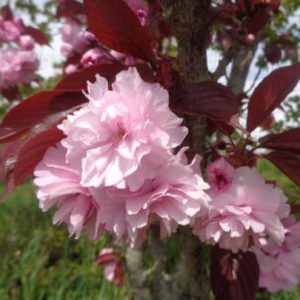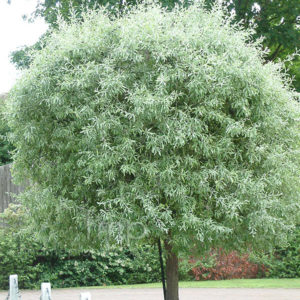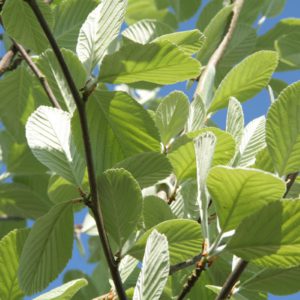Sorbus aucuparia
Price range: €150.00 through €325.00
Description
Quick Facts
- Common Name: Rowan, Mountain Ash
- Botanical Name: Sorbus aucuparia
- Plant Type: Deciduous tree
- Mature Height: 8-15m
- Mature Spread: 4-7m
- Flowering Period: May to June
- Flower Colour: Creamy-white flowers in clusters
- Foliage: Pinnate leaves with 9-15 leaflets, turning yellow, orange, and red in autumn
- Hardiness: RHS H7 (very hardy)
- Soil Requirements: Moist, well-drained, tolerates most soil types including acidic
- Aspect: Full sun to partial shade
- Maintenance: Low
Description
Experience the enchanting beauty of Sorbus aucuparia, the beloved native Rowan that brings multi-season interest, exceptional wildlife value, and deep cultural significance to Irish gardens with its creamy spring blossoms, spectacular autumn berries, and graceful form. This outstanding native tree offers year-round appeal—abundant clusters of creamy-white flowers that attract pollinators in late spring, spectacular displays of bright orange-red berries that create stunning visual impact from late summer through autumn, elegant pinnate foliage that transforms into warm shades of yellow, orange, and red before falling, and a naturally elegant form that suits both traditional and contemporary settings, making this one of Ireland’s most treasured and versatile native trees.
In late spring, this captivating tree becomes adorned with large flat-topped clusters of creamy-white flowers, each measuring 10-15cm across, creating a spectacular display that attracts bees, butterflies, and other beneficial insects in abundance. As summer progresses, clusters of small green berries develop, ripening to brilliant orange-red by late summer and creating one of the most spectacular berry displays of any native tree. The abundant berries persist into autumn and early winter, providing invaluable food for thrushes, blackbirds, fieldfares, redwings, and other songbirds. The elegant pinnate leaves, composed of 9-15 toothed leaflets, create soft, feathery texture throughout summer before transforming into warm shades of yellow, orange, and red in autumn. The smooth grey bark develops attractive ridges with age.
Native to Ireland, Britain, and across Europe, this remarkable tree has been deeply woven into Irish folklore and mythology for millennia, traditionally planted near homes for protection and considered sacred. The name ‘aucuparia’ means ‘bird-catching’, referring to the berries’ use as bait in bird traps historically. Exceptionally hardy and adaptable, Rowan thrives in Irish conditions, tolerating exposed upland sites, poor acidic soils, coastal winds, and urban pollution whilst delivering reliable multi-season beauty and exceptional wildlife value.
Create stunning compositions by planting as specimen trees in lawns where the spring flowers, summer berries, and autumn colour can be fully appreciated. Magnificent in naturalistic woodland gardens, mixed native hedgerows, or wildlife gardens where the berries provide essential food for birds. Works beautifully combined with other native trees like birch, hawthorn, and oak for authentic Irish woodland character, or underplanted with native ferns, foxgloves, and bluebells that thrive in similar conditions. Excellent for ecological gardens and rewilding projects.
Caragh Garden Notebook
Planting: Space trees 6-8m apart for groupings or woodland plantings, or allow 8-10m for specimen placement. Plant bare-root trees from November to March, or container-grown specimens year-round (autumn or early spring is ideal). Dig holes twice the width of the root ball and incorporate organic matter. Plant at the same depth as the nursery soil mark. Stake for the first 2-3 years. Water thoroughly and mulch around the base.
Soil Preparation: Thrives in moist, well-drained soil with pH 4.5-7.0. Tolerates a wide range of soil types including poor, acidic, stony soils and heavy clay. Particularly well-suited to acidic conditions where many trees struggle. Prefers moisture-retentive soil enriched with organic matter but adapts to challenging sites. Tolerates exposure, coastal winds, and upland conditions. Best berry production occurs in full sun with adequate moisture.
Container Growing: Young specimens can be grown in large containers (minimum 60-80cm diameter) using soil-based, slightly acidic compost for several years. Water regularly during growing season. Feed in spring with slow-release balanced fertiliser. Eventually benefits from planting out for long-term health and to achieve full size potential, abundant flowering, spectacular berry displays, and maximum wildlife value.
Seasonal Care: Requires minimal maintenance—the naturally elegant form develops without intervention. Remove only dead, damaged, or crossing branches in late winter when dormant. Can be lightly thinned to improve air circulation and reduce disease pressure if needed. Watch for fireblight (blackened shoots)—remove affected branches promptly, cutting back to healthy wood. Apply slow-release balanced fertiliser in early spring. Mulch annually with organic matter. Water during prolonged dry spells in the first 2-3 years until well established.
Propagation: Propagate from seed collected from ripe berries in autumn—clean flesh from seeds, stratify for 3-4 months over winter, and sow in spring. Germination can be slow and variable. Seedlings show natural variation in berry colour and size. Semi-hardwood cuttings taken in summer can root but success is variable. Most gardeners prefer to purchase nursery-grown specimens for guaranteed quality, faster establishment, and reliable flowering and fruiting.
This native treasure is absolutely magical—those spectacular clusters of orange-red berries against autumn foliage are simply breathtaking! Steeped in Irish folklore and mythology, beloved by wildlife, and tough as nails. The spring flowers are beautiful, but it’s those glowing berries that steal the show. Perfect for bringing authentic Irish woodland character and invaluable wildlife habitat to any garden. A true native gem!






